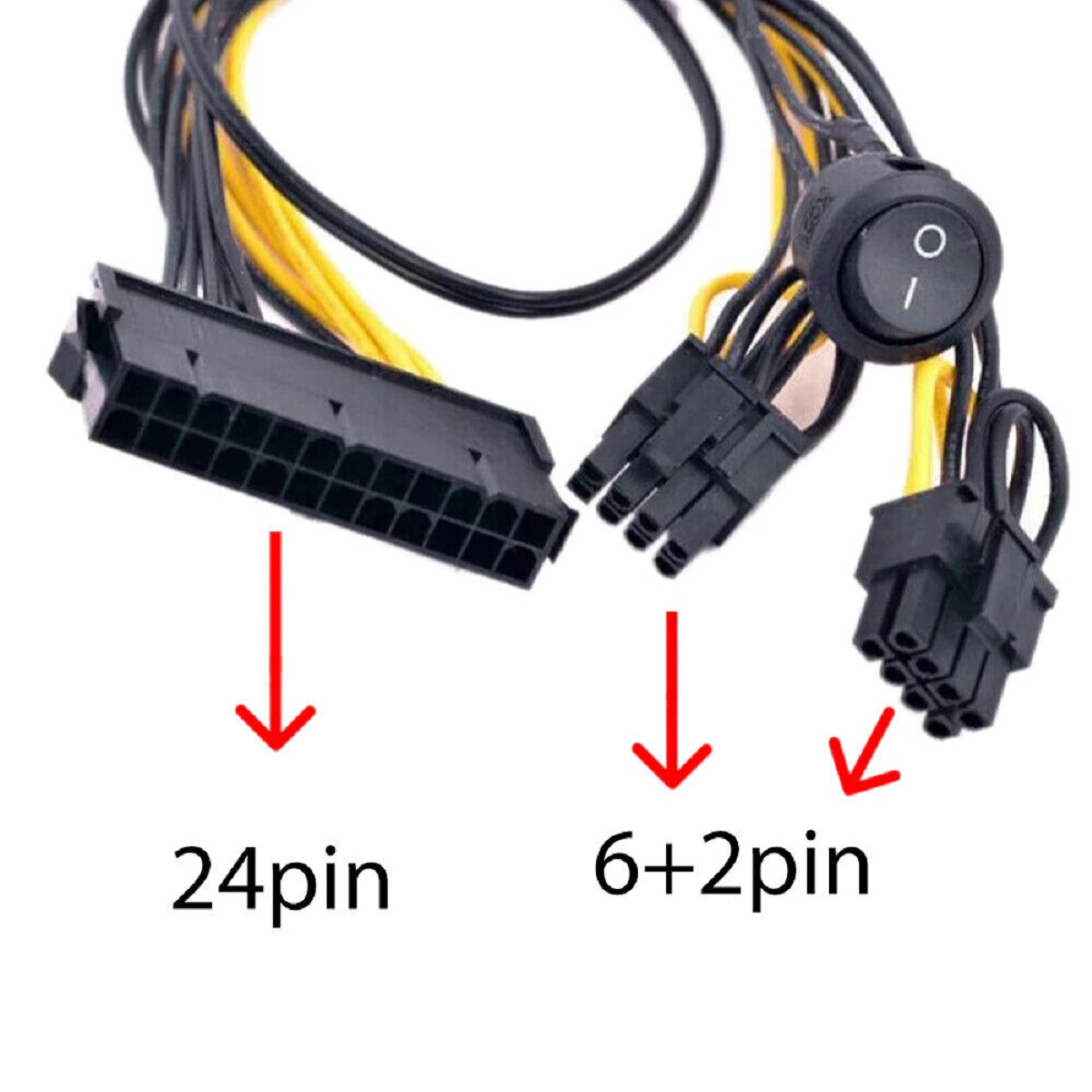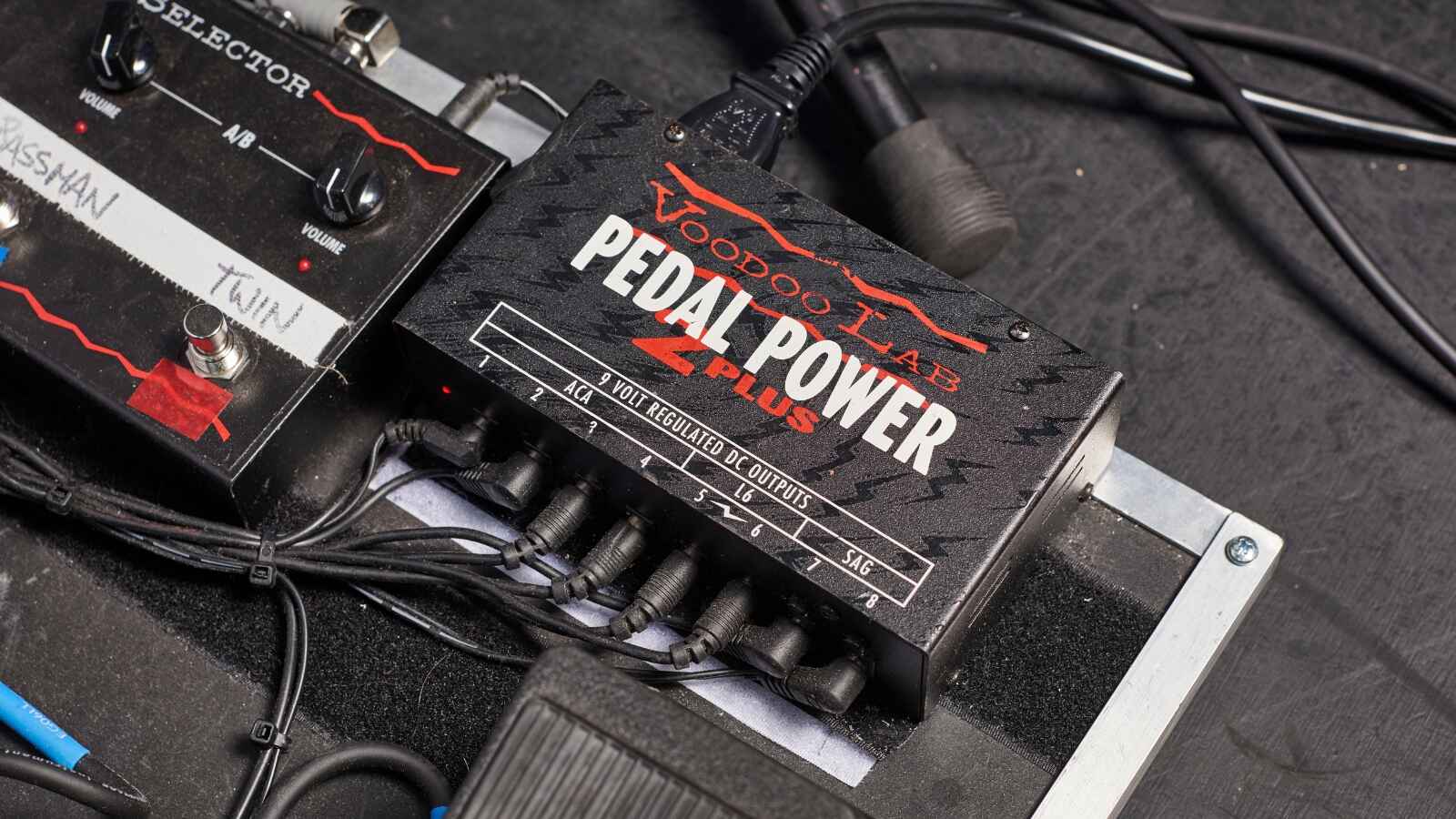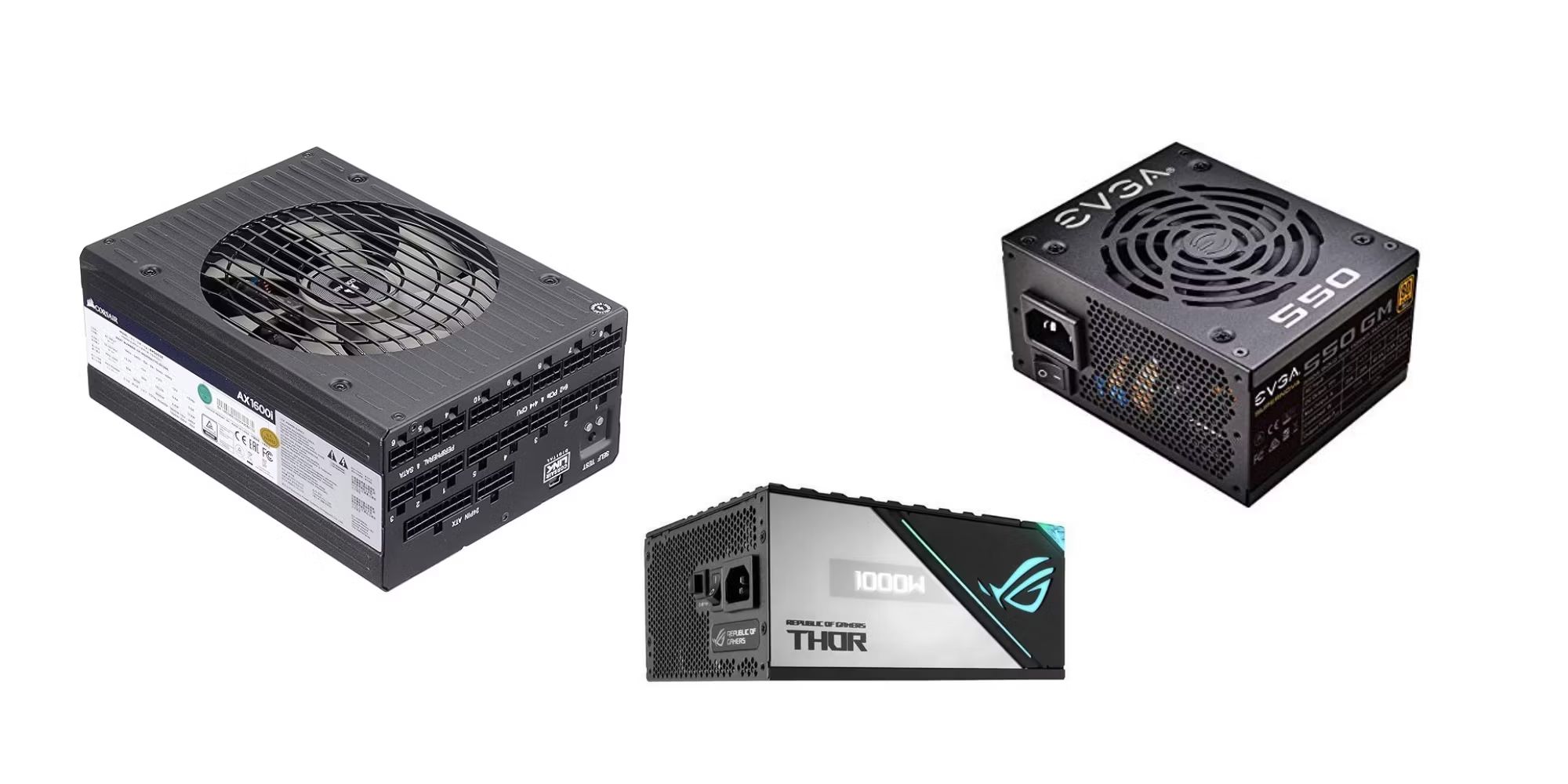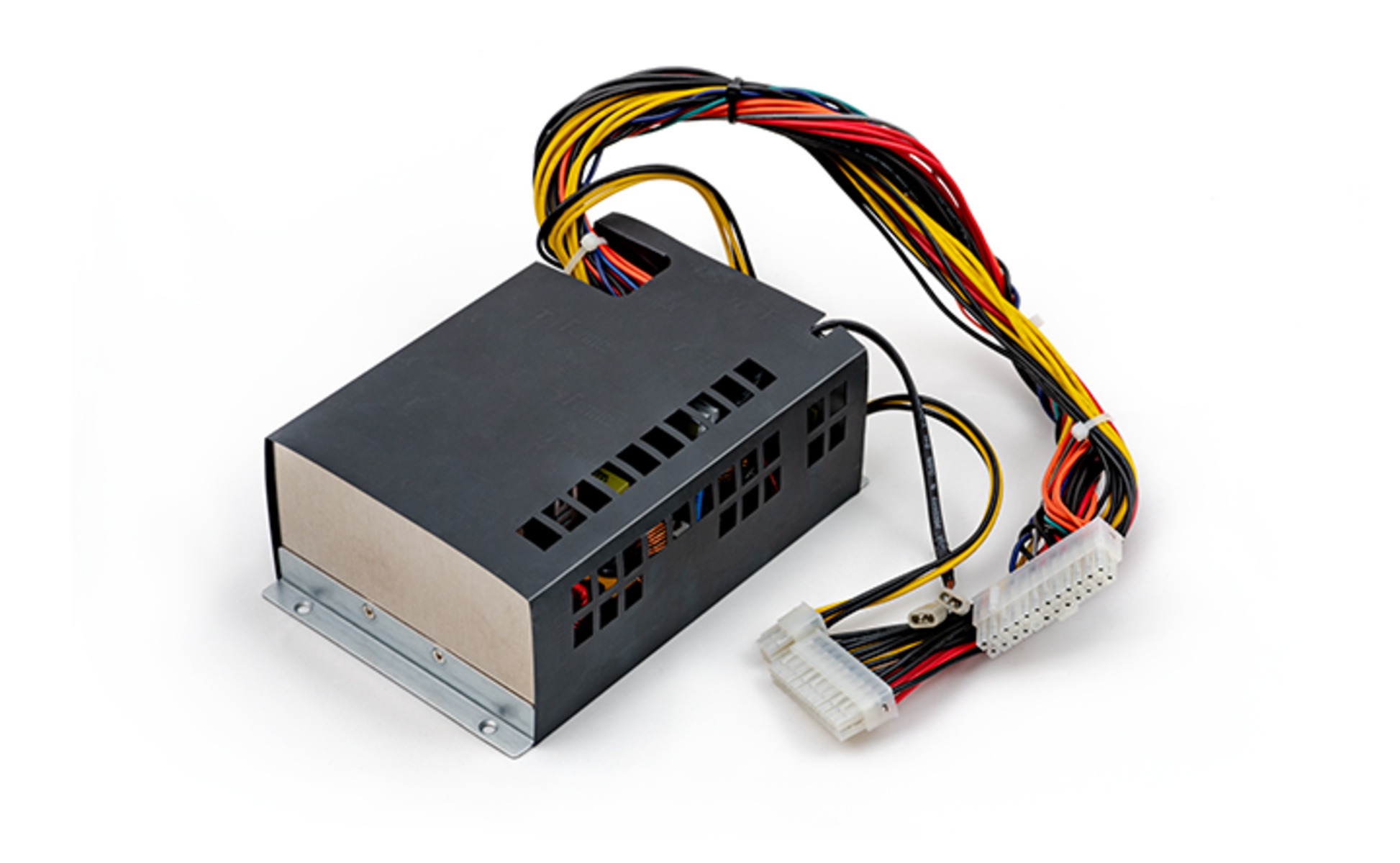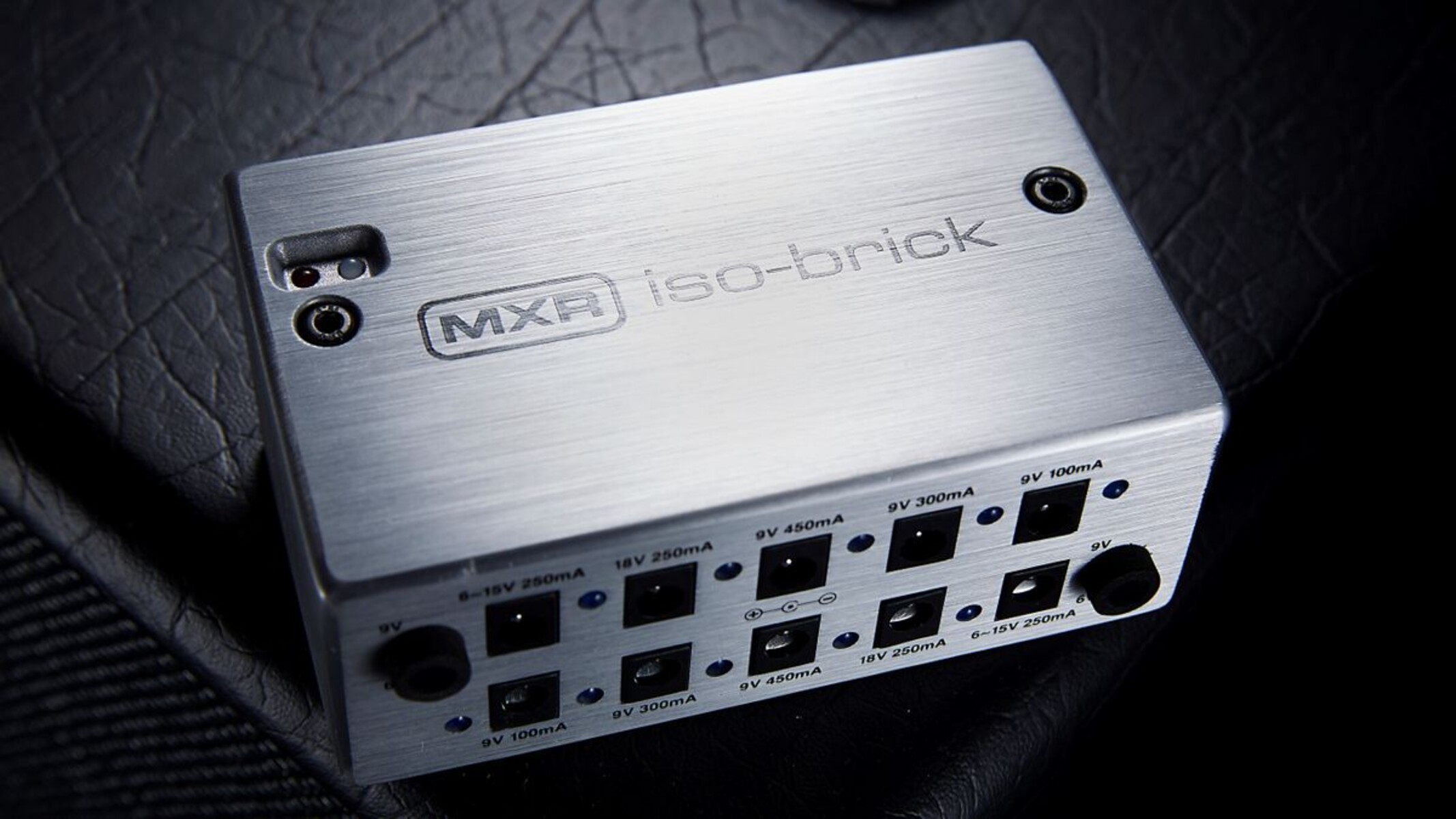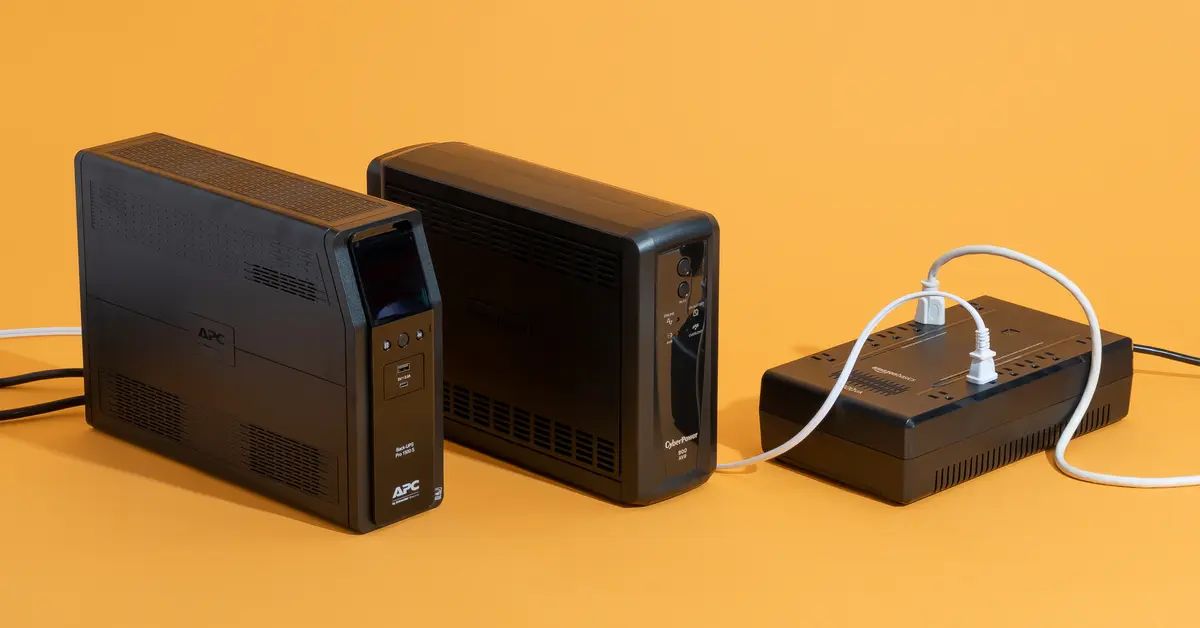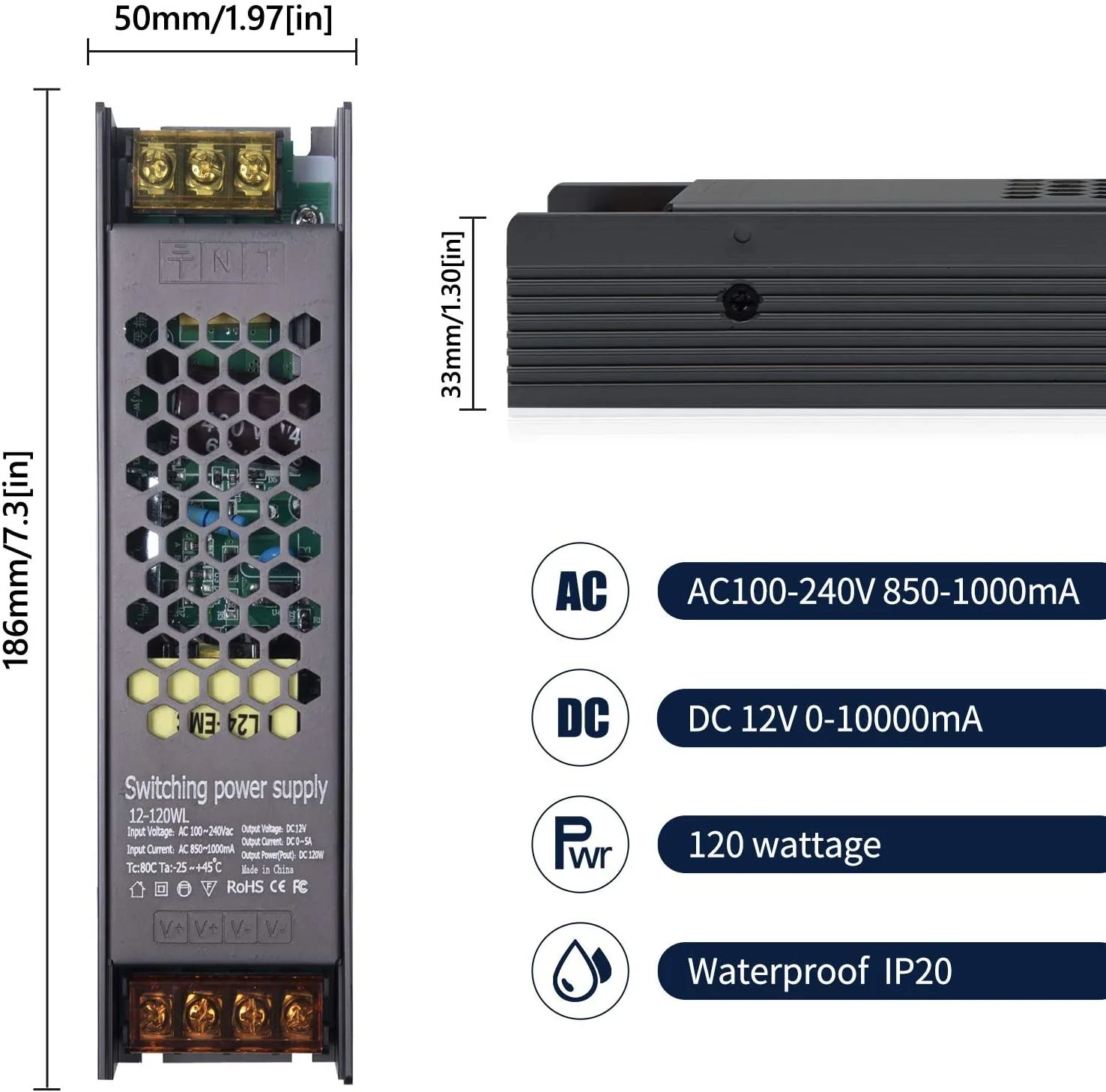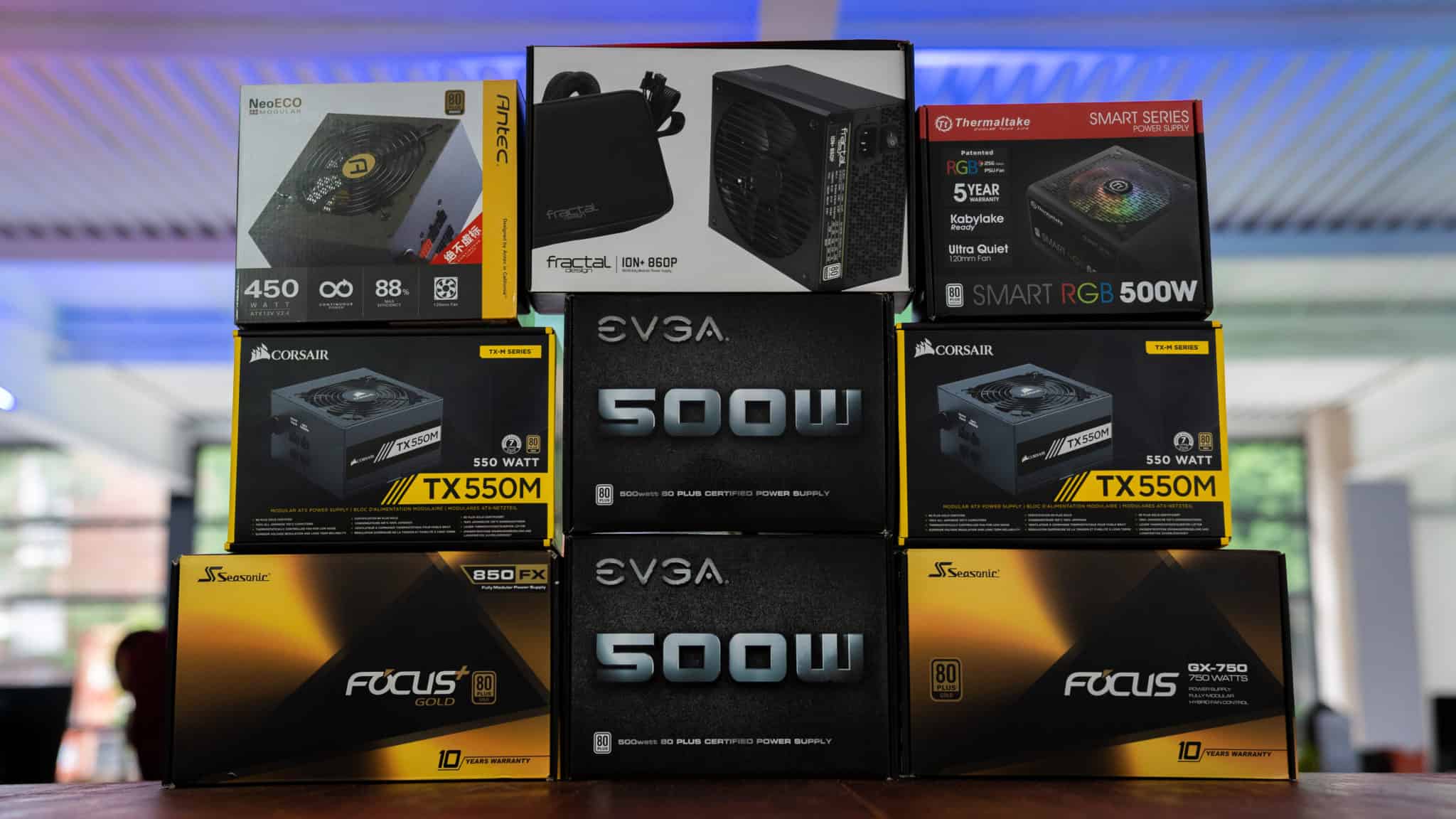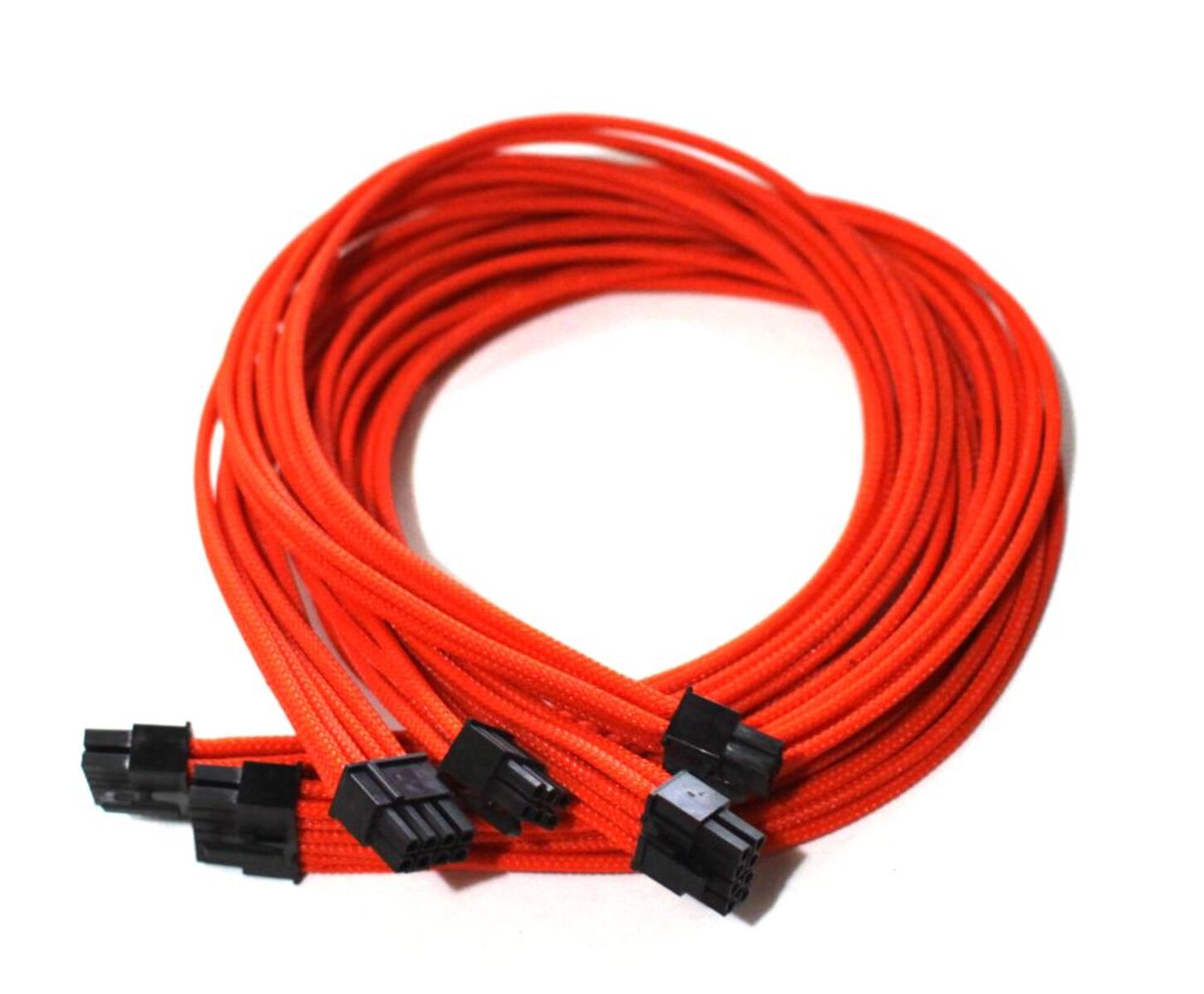Introduction
When it comes to building a computer, one of the most critical components that often gets overlooked is the power supply unit (PSU). The PSU is responsible for providing the necessary power to run all the hardware components of the computer. Without a reliable and efficient PSU, the overall performance and stability of the system can be compromised.
Two common types of PSU connectors that you may come across in your computer build are the 8(6+2)Pin and 24Pin connectors. These connectors play a vital role in connecting the PSU to the motherboard and ensuring proper power delivery to the system.
In this article, we will explore the differences between the 8(6+2)Pin and 24Pin connectors, as well as their importance and compatibility with motherboards. We will also discuss their impact on performance, overclocking support, and power delivery. By the end of this article, you will have a better understanding of these PSU connectors and their significance in a computer build.
What is PSU?
A power supply unit (PSU) is a vital component of a computer that converts the electrical power from an outlet into usable power for the various hardware components. It provides the necessary voltage and current required for the smooth operation of the computer system.
The PSU takes in the AC (alternating current) power supplied by the mains and converts it into DC (direct current) power that is suitable for the internal components of the computer. It ensures that the power delivered to the system remains stable and within the specified limits.
PSUs come in different wattage ratings, ranging from low-power units for basic systems to high-power units for gaming rigs and workstations. The wattage of the PSU determines the amount of power it can deliver to the system. It is essential to choose a PSU with adequate wattage to ensure the proper functioning of the hardware components.
In addition to wattage, PSUs may also be given efficiency ratings such as 80 Plus Bronze, Silver, Gold, or Platinum. These ratings indicate the efficiency of the PSU in converting the AC power to DC power. Higher efficiency ratings mean less power is wasted as heat and can result in lower energy bills and better overall system performance.
PSUs also come in different form factors to fit different computer cases. The most common form factor for consumer desktop computers is the ATX (Advanced Technology eXtended) form factor, although there are smaller form factors like Micro ATX and Mini ITX for compact systems.
Overall, the PSU is a critical component of a computer that ensures the stable and reliable power supply necessary for the proper functioning of all hardware components. It is essential to choose a high-quality PSU that matches the power requirements of your system to ensure optimal performance and longevity.
What is the 8(6+2)Pin Connector?
The 8(6+2)Pin connector, also known as the PCI Express power connector, is a type of power connector commonly used in modern computer systems. It is primarily used to provide power to the graphics card, which is a power-hungry component requiring a dedicated power source.
The 8(6+2)Pin connector consists of an 8-pin connector and a 6+2-pin connector. This design allows for flexibility, as the 6+2-pin connector can be separated into a 6-pin connector or combined with the 8-pin connector to form an 8-pin connection depending on the power requirements of the graphics card.
The purpose of the 8(6+2)Pin connector is to ensure that the graphics card has a stable and sufficient power supply. Graphics cards nowadays have become more power-hungry due to the advanced technologies and higher performance capabilities. The 8(6+2)Pin connector provides the necessary power to support the graphics card’s operation, enabling it to perform demanding tasks such as rendering high-quality graphics, gaming, and video editing.
One key advantage of the 8(6+2)Pin connector is its versatility. It is compatible with both 6-pin and 8-pin power connectors, allowing it to work with a wide range of graphics cards. This flexibility makes it convenient for users who may upgrade their graphics card in the future or switch between different models that have varying power requirements.
It is important to note that not all graphics cards require an 8(6+2)Pin connector. Some lower-power graphics cards may only require a 6-pin connector, while high-end graphics cards may require dual 8-pin connectors or even more. It is crucial to check the power requirements of your graphics card and ensure that your PSU has the necessary number of 8(6+2)Pin connectors to support it.
To sum up, the 8(6+2)Pin connector is a versatile power connector used to supply power to graphics cards. It offers flexibility by allowing for an 8-pin or 6-pin connection, depending on the power requirements of the graphics card. This connector ensures stable power delivery and is an important component for gamers, video editors, and other users who rely on high-performance graphics cards.
What is the 24Pin Connector?
The 24Pin connector, also known as the ATX power connector, is a standard power connector found in most desktop computer motherboards. It is responsible for delivering power from the power supply unit (PSU) to the motherboard, providing the necessary electrical power required for the system to function properly.
The 24Pin connector is so named because it consists of 24 pins arranged in a specific configuration. It is designed to carry both the main power supply and other essential signals to the motherboard. The connector has a unique shape that ensures proper alignment and prevents incorrect insertion.
The 24Pin connector plays a crucial role in powering the various components of the motherboard, including the CPU, chipset, memory modules, and expansion slots. It provides them with the necessary voltage levels and current to ensure their optimal performance and stability.
One notable feature of the 24Pin connector is its backward compatibility. It can be used with older motherboards that have a 20-pin power connector by simply detaching the four extra pins. However, it is important to note that using a 20-pin connector on a motherboard designed for 24-pin may limit its power delivery capabilities and might not provide sufficient power for all components.
Modern motherboards often come with additional power connectors to support high-power consumption components such as the CPU and GPU. These additional connectors, such as the 8(6+2)Pin connector, are used to provide dedicated power sources to these components, complementing the power supplied by the 24Pin connector.
When it comes to selecting a PSU, it is essential to ensure that it is equipped with a compatible 24Pin connector and has sufficient wattage to meet the power requirements of your motherboard and other components. Using an inadequate PSU or a mismatched connector can lead to instability, system crashes, or even potential damage to the hardware.
In summary, the 24Pin connector is a fundamental power connector used in desktop computer motherboards. It delivers power from the PSU to the motherboard, ensuring proper voltage and current delivery to all components. Its backward compatibility and role in providing power to the entire system make it a crucial component in any computer build.
Differences Between 8(6+2)Pin and 24Pin Connectors
While both the 8(6+2)Pin and 24Pin connectors play important roles in powering a computer system, there are significant differences between them in terms of their functions and the components they supply power to.
1. Function:
The 8(6+2)Pin connector is primarily used to provide power to the graphics card. It ensures that the graphics card has a stable and sufficient power supply for its demanding tasks, such as rendering high-quality graphics and gaming.
The 24Pin connector, on the other hand, is responsible for delivering power from the PSU to the motherboard. It provides power to all the components connected to the motherboard, including the CPU, memory modules, chipset, and expansion slots.
2. Pin Configuration:
The 8(6+2)Pin connector consists of an 8-pin connector and a 6+2-pin connector. This design allows for flexibility in connecting to a graphics card with either an 8-pin or 6-pin power requirement.
The 24Pin connector, as the name suggests, consists of 24 pins arranged in a specific configuration. It carries the main power supply and other essential signals to the motherboard, ensuring the proper functioning of all components.
3. Power Requirements:
The 8(6+2)Pin connector is typically used to provide additional power to the graphics card, especially high-performance models that require a dedicated power source. It ensures that the graphics card receives sufficient power to operate at its full potential.
The 24Pin connector is responsible for delivering power to the entire motherboard. It supplies power to the CPU, memory modules, chipset, and other components connected to the motherboard, ensuring their optimal performance.
4. Compatibility:
The 8(6+2)Pin connector is compatible with a wide range of graphics cards. Its versatility allows it to work with graphics cards that have either 6-pin or 8-pin power requirements. This flexibility makes it convenient for users who may upgrade their graphics card or switch between different models.
The 24Pin connector, on the other hand, is a standard connector used in most desktop computer motherboards. It is designed to ensure compatibility and proper power delivery to the motherboard and its components.
In summary, the 8(6+2)Pin and 24Pin connectors have distinct functions and power delivery responsibilities. While the 8(6+2)Pin connector focuses on providing power to the graphics card, the 24Pin connector is responsible for delivering power to the entire motherboard. Understanding these differences is crucial when selecting a power supply unit and ensuring the proper power supply to all components in a computer system.
Importance of PSU Connectors
PSU connectors play a vital role in powering and ensuring the proper functioning of the various components in a computer system. They provide the necessary electrical connections between the power supply unit (PSU) and the motherboard, graphics card, storage devices, and other hardware components. The importance of PSU connectors can be highlighted in the following ways:
1. Power Delivery: PSU connectors facilitate the delivery of stable and sufficient power to all the components in the computer system. Each connector has a specific purpose, such as providing power to the motherboard, CPU, graphics card, and other peripherals. The reliable power supply is crucial for the optimal performance and longevity of the hardware components.
2. Compatibility: PSU connectors are designed to be compatible with specific components and their power requirements. Different connectors are used for different components, such as the 24Pin connector for the motherboard, the 8(6+2)Pin connector for the graphics card, and SATA connectors for storage devices. Ensuring the compatibility of the connectors with the corresponding components is essential for proper operation.
3. Expansion Capability: PSU connectors also allow for future expansion and upgrades. They provide additional power connections required for adding new components or upgrading existing ones. For example, when upgrading a graphics card, having the appropriate PSU connector ensures that the new card receives the necessary power for optimal performance.
4. Power Efficiency: PSU connectors can contribute to power efficiency and reduce energy waste. Modern PSUs often come with modular cables that allow the user to connect only the necessary cables, eliminating unnecessary cable clutter. This not only improves airflow within the system but also reduces power loss due to cable resistances.
5. Safety Measures: PSU connectors are designed with safety features to prevent power overload and short circuits. Connectors often have specific pins for delivering various voltages, ensuring that the correct voltage is supplied to the corresponding component. Additionally, connectors may have locking mechanisms to ensure a secure and stable connection, preventing accidental disconnection that could potentially damage the hardware.
In essence, PSU connectors are essential for the functionality and reliability of a computer system. They provide the necessary power connections, ensure compatibility, allow for expansion, and contribute to power efficiency and safety. When selecting a power supply unit, it is crucial to consider the available connectors and their compatibility with the components to ensure optimal performance and longevity of the system.
Compatibility With Motherboards
When choosing a power supply unit (PSU) for your computer build, it is crucial to consider the compatibility between the PSU connectors and the motherboard. Compatibility ensures that the power supply can properly connect to and provide power to the various components on the motherboard. Here are some key points to consider regarding compatibility with motherboards:
1. Connector Types and Numbers: Different motherboards may require different connector types and numbers. The most common connector for motherboards is the 24Pin connector, which provides power to the main components of the motherboard. Other connectors to consider include the 4Pin or 8Pin CPU power connector, which supplies power to the CPU, and SATA power connectors for storage devices. It is essential to check the motherboard’s specifications to determine the required connector types and numbers.
2. Form Factor: Motherboards come in various form factors, such as ATX, Micro ATX, and Mini ITX. The form factor can affect the placement and number of power connectors on the motherboard. It is crucial to choose a PSU that matches the form factor of your motherboard to ensure that the connectors align correctly and that all the necessary power connections can be made.
3. Wattage: The wattage of the PSU should also be considered when it comes to motherboard compatibility. The PSU should have sufficient wattage to meet the power requirements of the motherboard and the other components connected to it. It is generally recommended to choose a PSU with a higher wattage to allow for future upgrades or additional components.
4. Efficiency Standards: Another aspect of compatibility to consider is the PSU’s efficiency standards, such as 80 Plus Bronze, Silver, Gold, or Platinum. These standards indicate the efficiency of the PSU in converting AC power to DC power. Higher efficiency can result in lower energy consumption and reduced heat generation. While efficiency standards do not directly impact motherboard compatibility, they can influence overall system performance and power consumption.
It is essential to thoroughly research and consult the motherboard’s documentation or specifications to ensure compatibility with the desired PSU. Additionally, PSU manufacturers often provide compatibility lists or tools on their websites to help users find the right PSU for their specific motherboard models.
By selecting a PSU that is compatible with your motherboard, you ensure a seamless and reliable power connection. Compatibility ensures that the motherboard receives the necessary power for consistent performance, stability, and longevity. Taking the time to ensure compatibility will help avoid potential issues and ensure a smooth and successful computer build.
Performance and Power Delivery
The performance and power delivery capabilities of a power supply unit (PSU) play a significant role in the overall performance and stability of a computer system. Here are some key considerations regarding performance and power delivery:
1. Stable Power Supply: A high-quality PSU with robust power delivery capabilities ensures a stable and consistent power supply to all the components of the computer system. Stable power is crucial for maintaining the optimal performance of the CPU, graphics card, memory modules, and other hardware components. Fluctuations or drops in power supply can lead to system instability, crashes, and potential hardware damage.
2. Power Efficiency: PSUs with higher power efficiency ratings, such as 80 Plus Bronze, Silver, Gold, or Platinum, are designed to provide power more efficiently, resulting in less energy wastage. Less wasted energy means lower heat generation and reduced strain on the PSU components. This can lead to better overall system cooling, longer PSU lifespan, and potentially lower electricity bills.
3. Wattage and Load Capacity: The wattage of the PSU determines the amount of power it can deliver to the system. It is essential to choose a PSU with sufficient wattage to meet the power requirements of all the components in the computer system. Overloading a PSU can lead to instability, system crashes, and potentially damage components. On the other hand, a PSU with excessive wattage may lead to poor power efficiency and unnecessary costs.
4. Power Delivery to High-Performance Components: CPUs and graphics cards, especially those used for gaming or heavy computing tasks, often require more power for optimal performance. PSUs with dedicated power connectors for these components, such as the 8(6+2)Pin connector for graphics cards and 4Pin/8Pin CPU power connectors, ensure reliable and sufficient power delivery to these high-performance components. This allows them to operate at their full potential without power-related bottlenecks.
5. Power Protection Features: Quality PSUs often come equipped with power protection features such as overvoltage protection (OVP), undervoltage protection (UVP), overcurrent protection (OCP), and short circuit protection (SCP). These features help safeguard the system and its components from electrical anomalies, surges, and potential damage.
Ensuring a well-matched PSU with appropriate power delivery capabilities is vital for maximizing the performance and stability of a computer system. It is important to consider the power requirements of the components, the PSU’s wattage and efficiency ratings, and any specific power needs of high-performance components. By doing so, you can ensure a reliable and effective power delivery system that supports optimal performance and protects your hardware investment.
Overclocking Support
Overclocking is the process of running computer components, such as the CPU or graphics card, at speeds higher than their default or factory settings. It is done to achieve higher performance and squeeze out extra power from the hardware. However, overclocking requires more power and can put additional strain on the components, especially the CPU and graphics card. The PSU plays a crucial role in supporting overclocking by delivering stable and sufficient power. Here’s how PSUs contribute to overclocking support:
1. Power Delivery: Overclocking typically requires an increase in voltage and power to the CPU and graphics card. A high-quality PSU with sufficient wattage and dedicated power connectors, such as the 8(6+2)Pin connector for the graphics card and 4Pin/8Pin CPU power connectors, is essential for providing the extra power needed to maintain stability during overclocking. The PSU’s power delivery capabilities ensure that the components receive the necessary power without voltage drops or instability.
2. Power Efficiency: PSUs with higher power efficiency translate into less wasted energy, reduced heat generation, and a more stable power supply. When overclocking, the components tend to generate more heat due to increased power consumption and higher frequencies. A power-efficient PSU can help mitigate the additional heat by running more efficiently, improving overall system cooling and stability during overclocked operation.
3. Wattage Capacity: Overclocking draws more power from the components, increasing their overall power consumption. It is essential to ensure that the PSU has enough wattage capacity to meet these increased power demands. Choosing a PSU with a higher wattage than the components’ standard requirements can provide a crucial buffer for stable power delivery during overclocking. Insufficient wattage can lead to crashes, system instability, or even damage to hardware components.
4. Voltage Stability: When overclocking, maintaining stable voltages is critical to prevent system instability. A high-quality PSU with voltage regulation capabilities ensures that the voltages delivered to the components remain stable even under increased loads. This stability helps avoid voltage spikes or drops that could impact system performance and the longevity of the hardware.
5. Enhanced Cooling Features: PSUs designed for overclocking and high-performance systems may incorporate additional cooling features such as larger fans, fan speed control, or even liquid cooling options. These features help dissipate heat more effectively, ensuring that the PSU itself remains cool and contributes to overall system cooling during intensive overclocking sessions.
When planning to overclock your system, consider investing in a high-quality PSU with sufficient wattage, dedicated power connectors, and efficient power delivery. This will ensure stable and reliable power to support the increased demands of overclocked components, resulting in higher performance and stability during your overclocking endeavors.
Conclusion
Power supply unit (PSU) connectors are integral components in a computer system, responsible for delivering necessary power to the various hardware components. Understanding the differences and importance of PSU connectors can help ensure compatibility, optimal performance, and stability in your computer build.
The 8(6+2)Pin connector is primarily used to provide power to the graphics card, allowing it to perform demanding tasks. It offers flexibility by accommodating both 6-pin and 8-pin power requirements, making it compatible with a wide range of graphics cards.
On the other hand, the 24Pin connector delivers power from the PSU to the motherboard, providing stable voltage and current to all connected components. It is a standard connector found in most motherboards and ensures compatibility across a range of system configurations.
PSU connectors play a crucial role in a computer system’s performance and power delivery. They provide stable power, compatibility, and expansion capability, allowing for future upgrades. The wattage, efficiency, and power protection features of a PSU all contribute to its overall performance and suitability for the system.
When selecting a PSU, it is crucial to consider the compatibility of the connectors with the motherboard, the power requirements of the components, and the PSU’s wattage and efficiency. This ensures a reliable power supply, optimal performance, and longevity of the hardware components.
In summary, PSU connectors are not to be overlooked when building a computer system. They are essential for powering the components, ensuring compatibility, and delivering stable power. By selecting the right PSU connectors and considering the overall power requirements, you can build a system that performs optimally and reliably for years to come.







